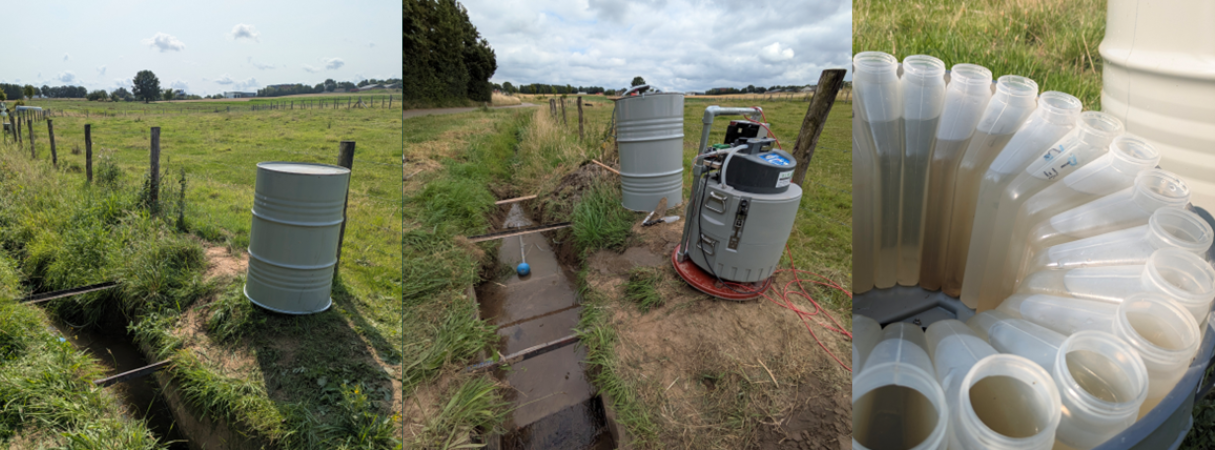In June 2025, we upgraded our environmental monitoring system to better understand how precipitation and surface runoff affect water quality and soil health in agricultural landscapes. This new continuous, event-based monitoring system allows us to capture key hydrological events as they occur, particularly during and after rainfall, providing real-time information on how land management practices influence runoff and pollution.
The first monitoring events were successfully recorded in August 2025, and data collection is currently ongoing. Each rainfall runoff event provides valuable information about water flow, sediment transport, and pesticide residues leaving the fields. This continuous stream of data helps us understand both the timing and intensity of contaminant movement from soil to water systems.
One of our main research objectives is to analyse pesticide concentrations in runoff water and sediments. These substances can degrade rapidly after application, making it essential to collect samples quickly in order to obtain accurate results. Our field teams are therefore on high alert to collect samples as soon as the first rainfall occurs, before chemical degradation masks the reality.
Why it matters
The results of this monitoring programme will highlight several essential ecosystem services:
- Water quality – Understanding how agricultural chemicals move through surface waters helps to design strategies to reduce pollution and protect aquatic life.
- Soil erosion control – Measuring sediments in runoff allows us to assess the impact of soil loss on productivity and downstream hydrological systems.
- Food production sustainability – Linking soil health, water quality, and land management promotes food system resilience and long-term agricultural productivity.

